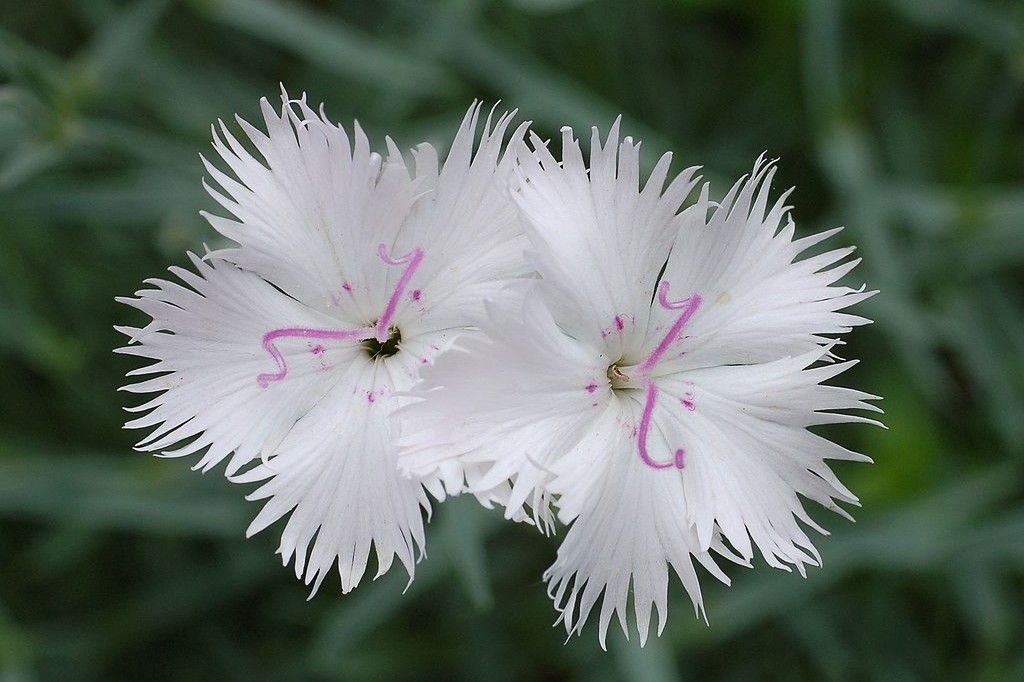Dianthus are well-behaved in our gardens. The flowers are fragrant, and the plants can be perennial, biennial, or annual. The common name "pinks” does not refer to the color but to the fringed edging of the petals that makes them look as if they had been cut with pinking shears.
They like full sun but can manage some shade and a variety of soils. However, they do best in well-drained soil with good air circulation, as they are susceptible to root rot and fungal diseases. Rabbits eat the narrow grey/green leaves, but thankfully deer leave these plants alone.
There are over 27,000 registered cultivar names, so there are plenty to choose from. Colors can be pink, lilac, purple, white, and combinations with picotee edging on the petals. They originated in Eurasian countries and are grown worldwide in home gardens because they are easy care and don't mind periods of dry weather. Dead heading keeps them looking attractive and the plants stay low.
The flowers make sweet little arrangements and even just a few, in a small bottle, look pretty. I would not be without these plants in my Midwestern garden. Most varieties are not especially long lived, however, but that is okay as then one can always be tempted to try new varieties that come on the market.
Common names are cheddar pinks, clove pinks, maiden pinks, and gillyflowers.
This is Moya Andrews, and today we focused on sweet dianthus.










